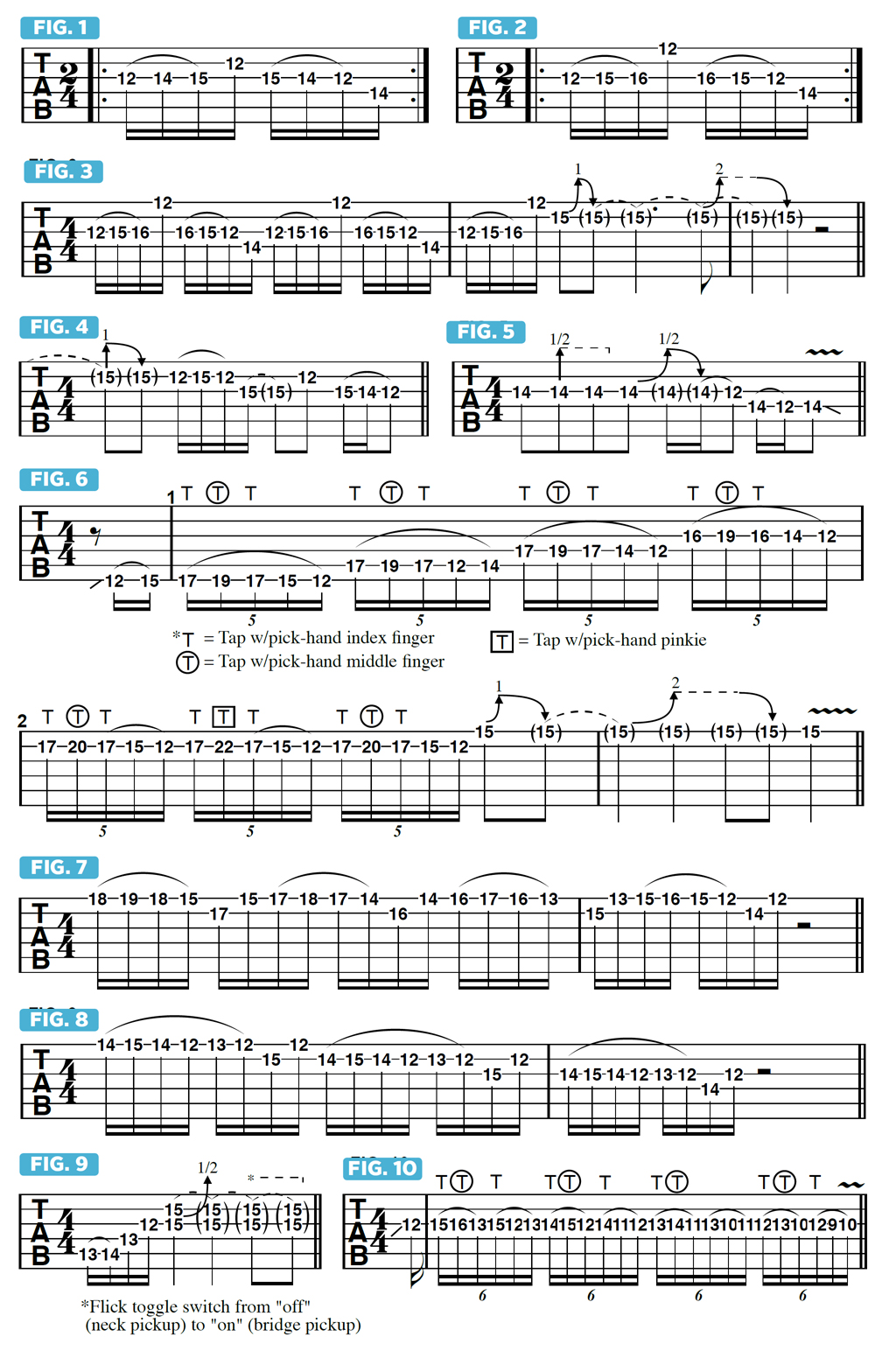How to play the solo in Whitesnake's Trouble Is Your Middle Name
Guitarist Joel Hoekstra teaches you the winding leads of this attitude-driven rocker
In this lesson, I’d like to present the guitar solo I crafted for the new Whitesnake song Trouble Is Your Middle Name, as featured on our latest album, Flesh & Blood.
The solo features some fluid-sounding multi-finger fretboard tapping, plus some cool chromatic movement and crazy string bending, which I’ll guide you through. The opening phrase is based on the E blues scale (E, G, A, Bb, B, D) as played in 12th position.
Some of you might be familiar with the rolling legato lick shown in Figure 1, which is centered on the G string. I devised a twist on this phrase by replacing the B note with a high E, as shown in Figure 2. In the solo, I follow that repeating lick with a whole-step bend from D to E on the B string’s 15th fret, then a two-step overbend up to F# (see Figure 3).

The next phrase, (see Figure 4), is a pretty standard rock lick: after the gradual release of the bend, I do a hammer/pull between B and D on the B string, followed by a Bb note on the G string, then cap off the phrase with a double pull-off, from Bb to A to G.
Figure 5 shows the end of the first part of the solo, which features a series of half-step pre-bends from A to Bb on the G string and a resolution to the E root note.
The second part of the solo is where the tapping comes into play. As illustrated in Figure 6, I start off with a slide up to E on the 6th string’s 12th fret with my fret-hand index finger, followed by a quick hammer-on to G. I then tap the same string with my pick hand’s index and middle fingers at the 17th and 19th frets to sound A and B then pull-off all the notes in reverse order.
The sequence then moves to each higher string while remaining within the structure of E minor pentatonic (E, G, A, B, D). When I get to the B string, I alternate between middle-finger and pinkie taps and end the phrase with wide bends on the high E string.
Figures 7 and 8 are inspired by Randy Rhoads, with the former being built from descending chromaticism and the latter featuring unusual half-step movement in a symmetrically shaped descending pattern. Figure 9 is based on a B augmented triad (B, D#, G) that leads up to an oblique bend that’s treated to some 'on/off' toggle switching.
The final phrase, Figure 10 features some more two-fingered tapping with another Rhoads-approved chromatically descending phrase. There are many complex articulations to get stuck into on this one, so be patient and tackle each phrase beat by beat, then work on smoothly connecting them.
Joel Hoekstra plays for Whitesnake, the Trans-Siberian Orchestra, Cher and his own side project, Joel Hoekstra's 13. Whitesnake's latest album is 2019's Flesh & Blood. Find out more at joelhoekstra.com.
Get The Pick Newsletter
All the latest guitar news, interviews, lessons, reviews, deals and more, direct to your inbox!









![Joe Bonamassa [left] wears a deep blue suit and polka-dotted shirt and plays his green refin Strat; the late Irish blues legend Rory Gallagher [right] screams and inflicts some punishment on his heavily worn number one Stratocaster.](https://cdn.mos.cms.futurecdn.net/cw28h7UBcTVfTLs7p7eiLe.jpg)
